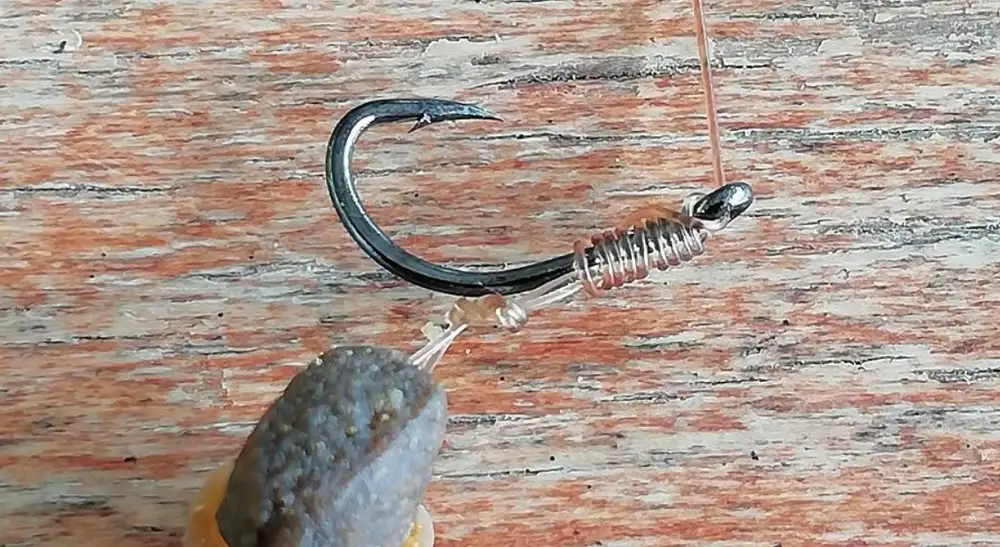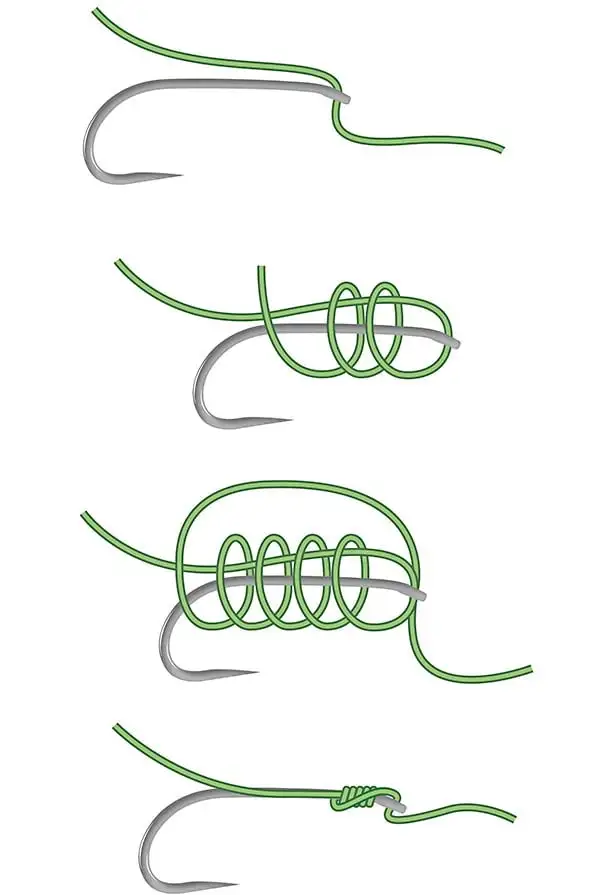This is a demo store. No orders will be fulfilled.
Your Guide to Fishing Knots

Many anglers will have to agree that there is nothing more important than the knots you choose for your terminal tackle. The right fishing knot can ensure that, after all the effort of getting that bite, your tackle holds so that your intended target hits the back of your net.
This guide will show you how to tie strong, reliable knots so you can be safe in the knowledge that your line won’t give way when landing hard-fighting fish. The following are some solid performers to use for almost all of your fishing. There’s no need for complicated knots, just ones that do what you need them to and don’t buckle under pressure.
The Grinner Knot
Probably the most used knot for fishing, the grinner knot is great for tying to hooks and swivels and works well on light and strong lines for all manner of species and techniques. Great with all lines apart from fluorocarbon, where a blood knot works best.
- Simply pass your chosen line through the eye/swivel
- Then double it back
- Form a loop with the tag
- Then pass the tag end through the loop
- Pass both lines through the loop up to 6 times (more times the thinner the material you are tying)
- Then pull the tag end so the knot tightens
- Grip the hook/swivel, and then pull the knot down snug to the eye or your hook/swivel and trim.
- Don’t forget to moisten all your knots before tying them

The Blood Knot
The most simple of knots and brilliant for speed and ease, the blood knot works well with fluorocarbon so we use it instead of a grinner when using this material.
- Pass the line through your hook eye
- Whip your tag end around your mainline up to 7 times
- Pass the tag end through the last loop near the hook eye
- Then wet the knot
- Pull the tag and the hook to slide the knot flush to your hook before trimming

The Knotless Knot
This knot is perfect for the infamous and so readily used hair rig. It’s really simple to tie and as strong as an ox, maintaining a high line strength. Great with baits like boilies, large pellets and sweetcorn. Measure up with the bait you’re going to be using beforehand to make sure you get the correct length of hair.
- Simply tie a loop in the end of your chosen material
- Then mount your bait
- Then pass your line through the back of the hook eye
- Line up the bait so it’s almost touching the bend of the hook
- Then double the line and whip seven times down the shank of the hook
- Trap the line before passing your line back through the back of the hook eye
- Then wet and pull it tight

The Four Turn Water Knot
Perfect for forming paternoster rigs, or joining two materials the Four Turn Water knot is great for fly fishing droppers too.
- Simply have each line side by side and form a loop with both
- Pass both materials through the loop four times
- Moisten, and tighten before trimming.
- You will find both materials are now joined securely

The Figure 8 Loop Knot
This is a must-know knot for match anglers and carp anglers as it is exceptionally strong and is a great way of connecting hooklengths.
- Simply double over your line
- Then take the head of the loop back over both the lines
- Pass it through the loop created at the front
- Then moisten, tighten, and trim the tag end

Grinner-to-grinner
Also known as the running-line knot and double uni knot. Use this when tying two sections of line together; it forms a nice neat knot that won’t snag and it also works well when joining the line to braid, so it’s good for tying on leaders.
- Take 2 pieces of line and place them side-by-side
- Create a loop using one piece of line
- Go around the other line and through the loop five times (Grinner Knot style)
- Moisten the knot and pull it
- Flip the knot around to your left
- Repeat the process again, but using the other line against the mainline
- Then slide both of the knots towards each other to meet in the middle
- Trim off the tag ends and then you will have a lovely, neat knot

These are the most readily used and effective knots used in angling for a whole host of species but remember, practice makes perfect in terms of tying them! If you want some more knot tying tips and tricks, check out the videos on AD's youtube channel or on Facebook.
There are many more different fishing knots that we use at the bankside, let us know your favourite on our social media!